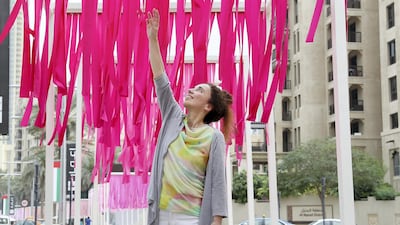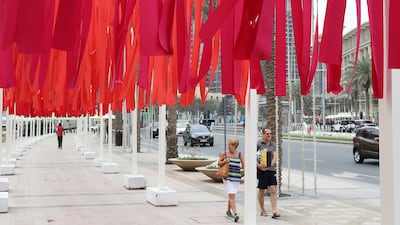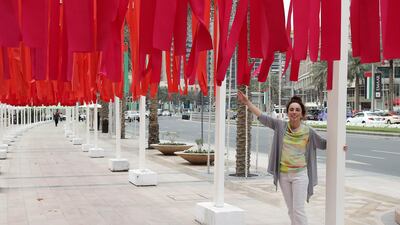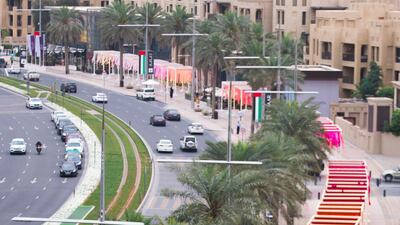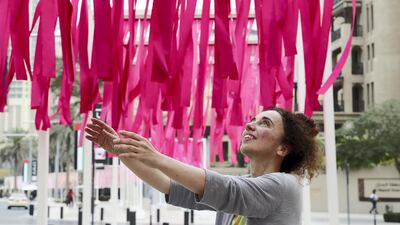If you’ve taken a walk around Downtown Dubai recently, you’ve probably noticed that there’s a dash more colour than usual, or, to be precise, a dash of 100 more colours, thanks to Tokyo-based French artist Emmanuelle Moureaux’s travelling installation 100 Colours, which is in situ on The Boulevard.
The coloured-ribbon installation has been travelling around the globe since it debuted in Tokyo in 2013, although Moureaux says that the installation is slightly different each time depending on the context of the city and the specific environment in which it takes place.
It should probably come as no surprise that when I ask the artist what sets the Dubai version apart from previous cities that have hosted 100 Colours, her immediate answer is, size.
“The unique thing about Dubai is the scale – it’s a kilometre long,” she says. “The colours are the same in each city I do it in, but I adapt the form and the context of those colours. The Dubai one is like a long walk into the city. It’s very important to me to make people more conscious about colours.”
As the name suggests, Moureaux uses her 100 colours wherever she exhibits, but she identifies some specific colour themes with Dubai. “Dubai, I think, is sky colours, earth colours and water colours,” she says, speaking with previous experience of four holidays in the city prior to arriving last week to start the installation.
It may have been created in 2013, but Moureaux says 100 Colours was inspired long before that – on her first visit to Tokyo as an architecture student in 1995. “When I first arrived in Tokyo, I was fully fascinated by the colours overflowing on the street,” she says. “In that very moment, my mind decided to move to Japan. The overwhelming number of store signs, flying electrical cables and flashes of blue sky, framed by various volumes of buildings, created three-dimensional ‘layers’ in the city.”
True to her word, Moureaux moved to Tokyo on receiving her French architecture licence in 1996 and, inspired by the city’s bright hue, created her own design concept, which she calls Shikiri.
“It means dividing and creating space with colours. ‘Shikiri’ is an invented name that means ‘to divide space using colours’, in Japanese. I use colours as three-dimensional elements, like layers, in order to create spaces – not as a finishing touch applied on surfaces.”
Moureaux has applied her Shikiri concepts to work from small design pieces like chairs, to entire buildings in Tokyo, and 100 Colours was conceived as a celebration of the 10th anniversary of her studio.
“I want to give emotion through colours, whether it is architecture or an art piece,” she says. “Through my creation, I want people to see colours, touch colours, and feel colours with their senses. The overflowing effects of colours in space will show that colours can give more than a space, but a space with additional layers of human emotion.”
Moureaux returned to Tokyo on Sunday, but before she left she had the chance to check out how early visitors to the Dubai installation were responding.
“It’s interesting because the width of the installation is narrower than the width of the walkway, but people are naturally drawn to walk within the colour,” she says. “They don’t even need to look at the colour, they can just feel it with their body. It creates something like a new dimension of walking in the city. Like a new pathway inside the existing one.”
_________________
Read more:
Art Dubai to partner with Saudi Arabia's Misk Art Institute
WATCH: How an arts programme is helping to preserve Old Jeddah
Changing Saudi art scene: New arts complex to open in Jeddah
WATCH: eL Seed gets to work on his first mural in Abu Dhabi
_________________
